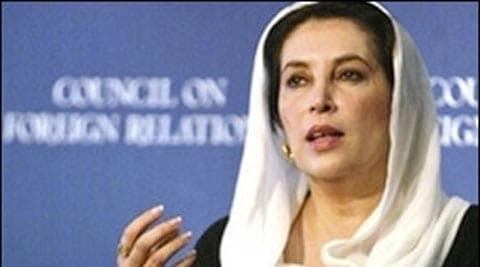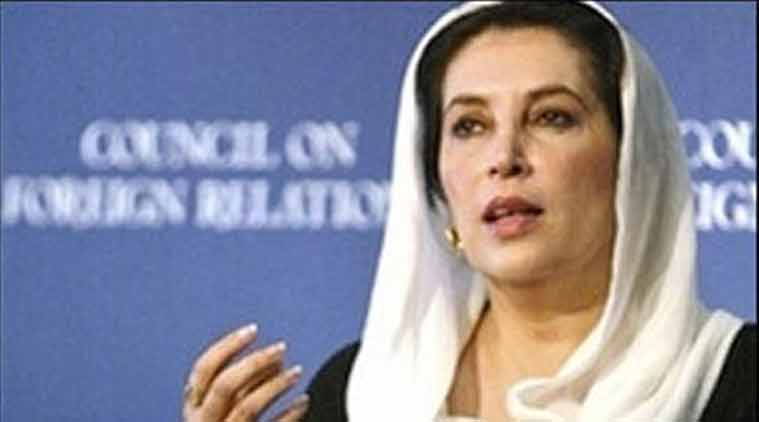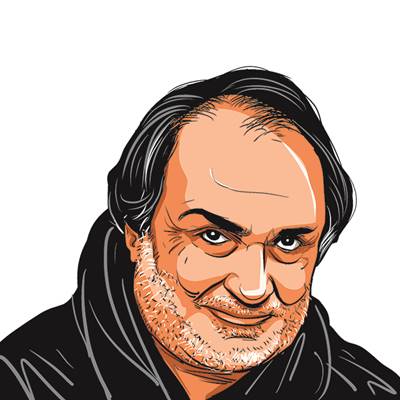Opinion An unsolved murder mystery
Benazir Bhutto’s killing continues to roil Pakistan

 Benazir Bhutto was killed in a bomb and gun attack in Rawalpindi in 2007.
Benazir Bhutto was killed in a bomb and gun attack in Rawalpindi in 2007.
On October 2, American lobbyist Mark Siegel deposed through video-link from Washington to the Rawalpindi commissioner that he had proof that then President Pervez Musharraf had Benazir Bhutto killed in 2007, after she defied his advice not to end her exile and return to Pakistan. He also stated that Benazir had received a threat call in Washington from the general in his presence. So real was the threat that she appeared greatly upset. She was nearly killed in Karachi after she landed in Pakistan and was finally shot in the head by a terrorist in Rawalpindi.
It’s a long shot that Siegel will convince anyone in Pakistan. Musharraf got on TV to call him a liar, on the take from Asif Ali Zardari, fabricating evidence against him for big money. The general smiled as he stated that he had, in fact, warned Benazir on the phone that intelligence reports talked of “suicide bombers” (trained by al-Qaeda) planning to attack her in Pakistan. Linking Benazir’s husband, Zardari, to her assassination was clever because an intra-party split in the PPP is currently targeting him as the psychopath who kills to remain in power. But according to Siegel, Benazir had told him that if she were killed, Musharraf would be to blame.
The Federal Investigative Agency (FIA) was seized of the Benazir murder case when its prosecutor, Chaudhry Zulfiqar Ali, focused on the spoor of the killers, was shot dead in Islamabad in 2013. His killers were arrested and one injured killer, Abdullah Umar, turned out to be the son of Lt Colonel Khalid Mehmood Abbasi, dismissed earlier from the army for trying to kill Musharraf in 2003. The gang was related to a Muslim leader of Indian-administered Kashmir, Asiya Andrabi, and was also linked to the International Islamic university in Islamabad. Umar was bailed out in 2014.
Pakistani intelligence had intercepted a telephone call of Taliban leader Baitullah Mehsud congratulating Benazir’s killers, which more or less decided the conundrum. But a UN inquiry team led by Heraldo Muñoz was mystified by other clues. Muñoz ended up writing his book, Getting Away with Murder: Benazir Bhutto’s Assassination and the Politics of Pakistan, and questioned what looked like “collaborative” evidence. But then the PPP’s misfortunes overtook the party. It split three ways: Benazir’s sister-in-law accused Zardari of foul deeds and created her own Bhutto Shaheed PPP; another woman, Naheed Khan, former political secretary of Benazir, became a party rebel and formed her own Pakistan People’s Party Workers (PPP-W); and Zardari, who ran the mainstream PPP, mainly based in Sindh.
The Rawalpindi anti-terrorism court hearing the case had Benazir’s driver, Javed Rehman, testify that it was Naheed Khan, sitting next to Benazir in her armoured car, who had asked her to open the hatch and greet her fans from the roof. She was shot by her assassin in the skull as she waved to the crowd. Rehman, who serves at Zardari House, claimed that Naheed Khan herself had tried to open the escape hatch but failed and then asked another occupant of the car to do the needful. Naheed Khan immediately denied that she had prompted Benazir to become a clear target and asked the court to make her a party to the case so that she could put her own “facts” before the judge.
She told the press: “We believe that PPP co-chairman Asif Ali Zardari is solely responsible for the party’s worst defeat in the 2013 general elections and the prevailing ‘disintegration’ in the party. We want accountability of those who are responsible for the downfall of PPP.” More trouble is ahead for Zardari, whose close friend, Asim Hussain, is under arrest, facing charges of bigtime gouging from Pakistan State Oil, the state importing monopoly.
There are loose ends that threaten to remain loose ends. Benazir’s personal bodyguard, Khalid Shahenshah, who was seen in charge of her physical security as she spoke for the last time in Liaquat Bagh, was killed by someone in Karachi in 2008. (After Benazir’s brother, Murtaza Bhutto, was murdered in Karachi in 1996, an important eyewitness police official was similarly “taken out”.)
Benazir’s actual killers, connected to Taliban leader Baitullah Mehsud — himself killed by an American drone — had stayed the night before the murder at a seminary called Darul Uloom Haqqania, near Peshawar, belonging Maulana Samiul Haq, the famous teacher of the Afghan Taliban. That lead went cold long ago.
Another mystery death has been added to Pakistan’s registry of high-profile violence. The country’s founder, M.A. Jinnah, died at a railway crossing in a “lorry” not fit for carrying a head of state. His sister, Fatima, was supposed to have died a normal death, but many important witnesses saw blood on her corpse. In 1951, then PM Liaquat Ali Khan was shot dead at the same spot where Benazir addressed her rally — Liaquat Bagh, named after him. Pakistan’s most transformational dictator, General Zia-ul-Haq, was killed in an air crash in 1998 and no one knows who was behind it — unless you are committed to naming Pakistan’s permanent ally, the US; or India, Pakistan’s permanent enemy.
The writer is consulting editor, ‘Newsweek Pakistan’




